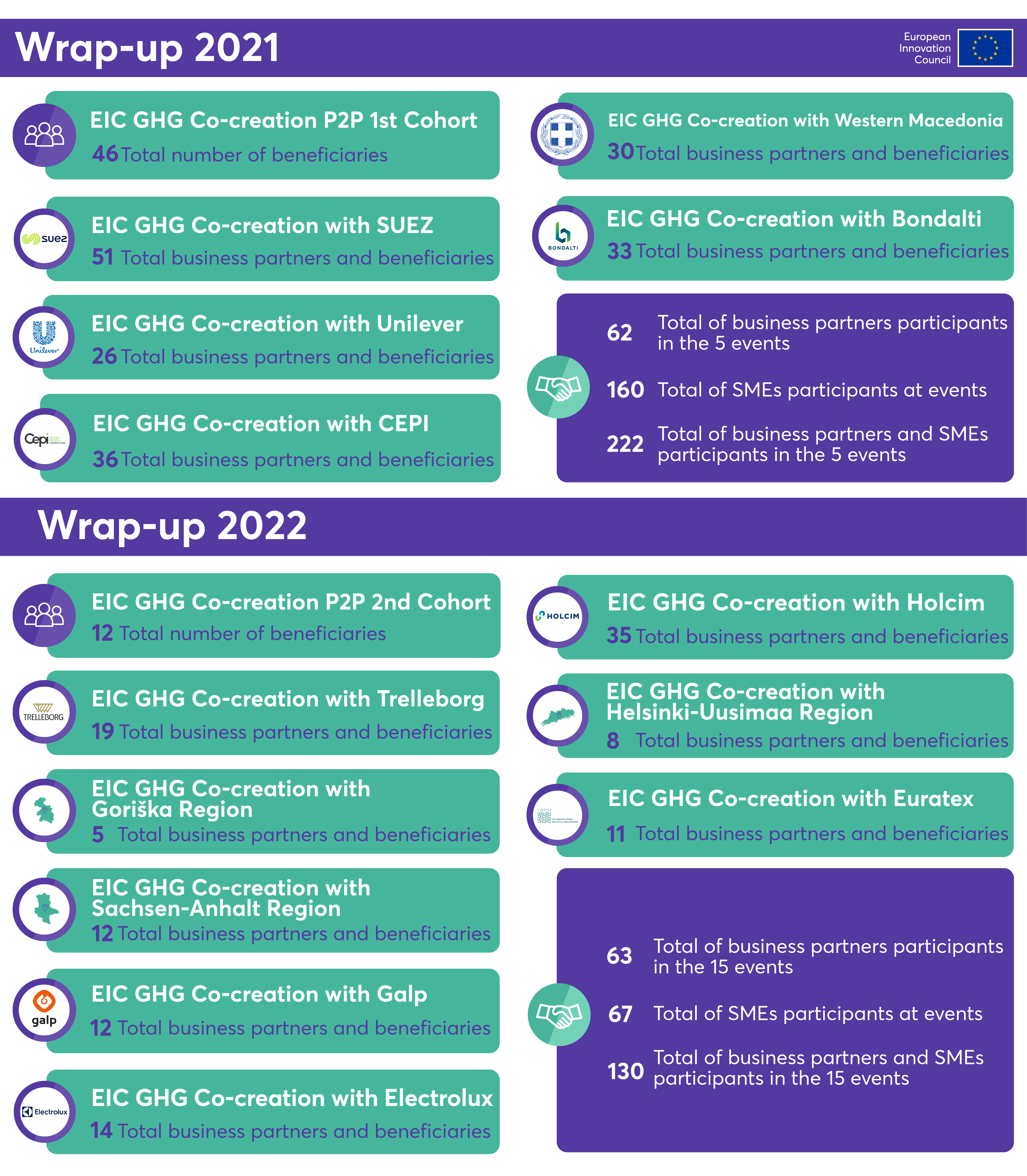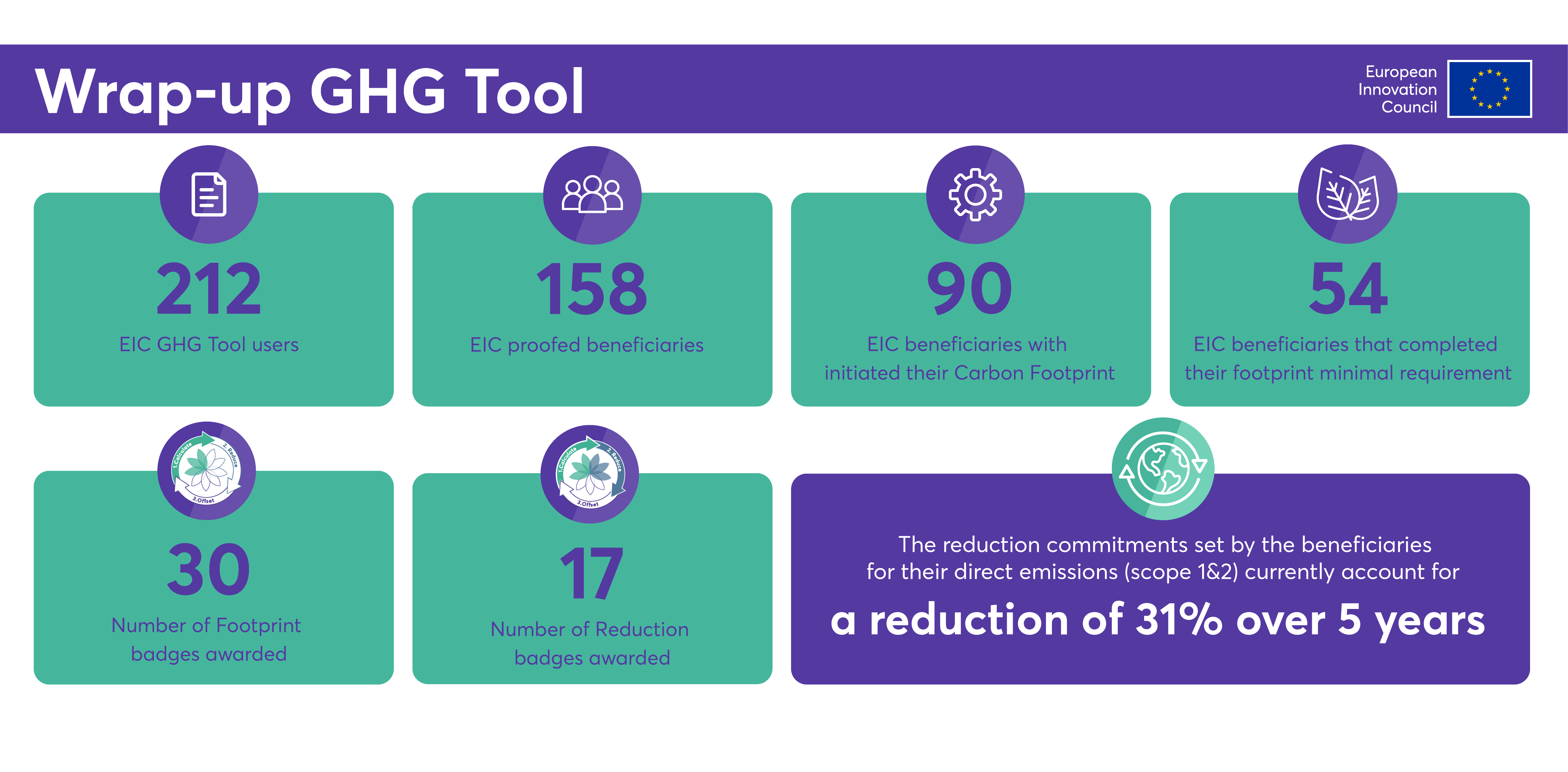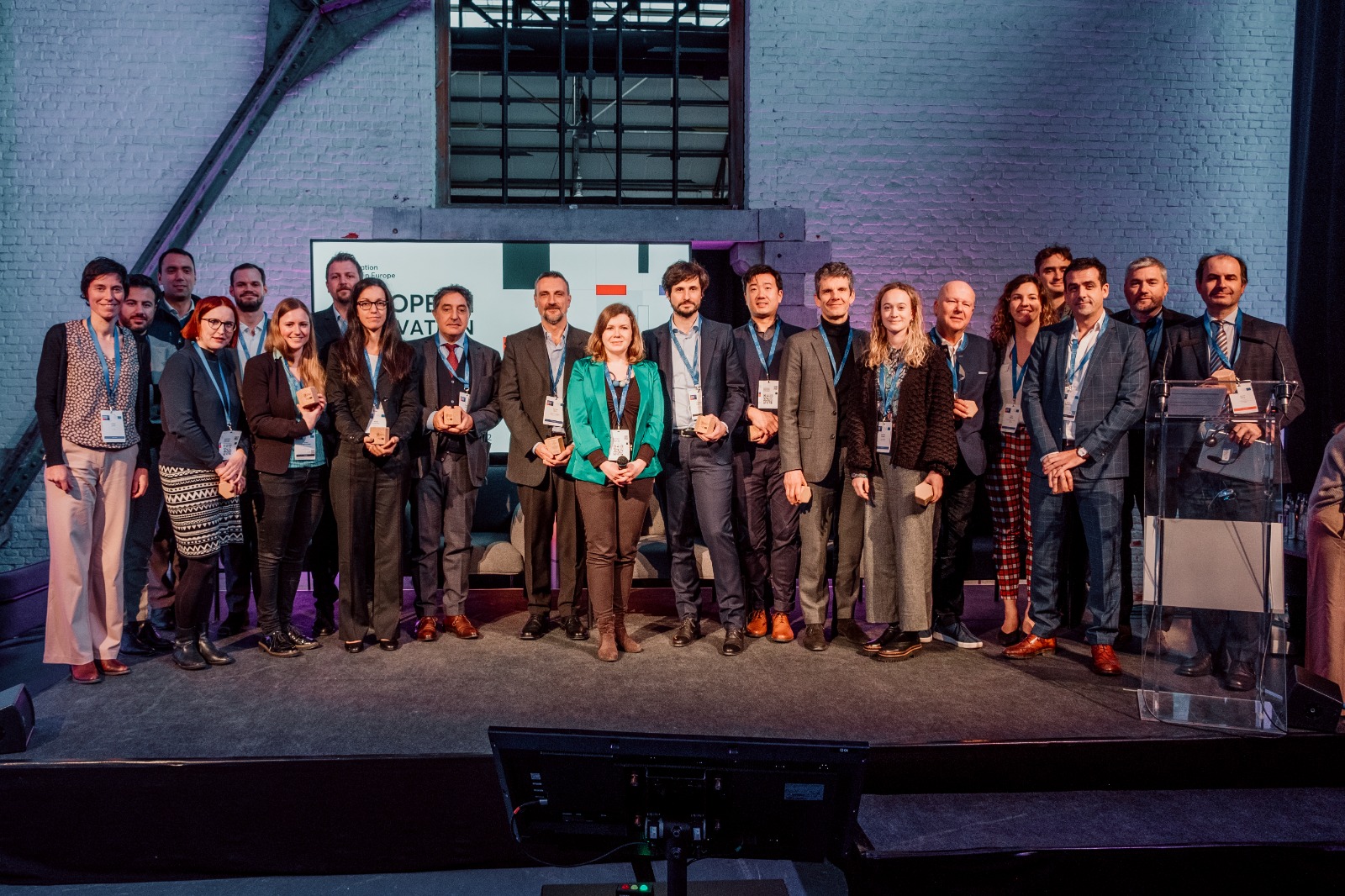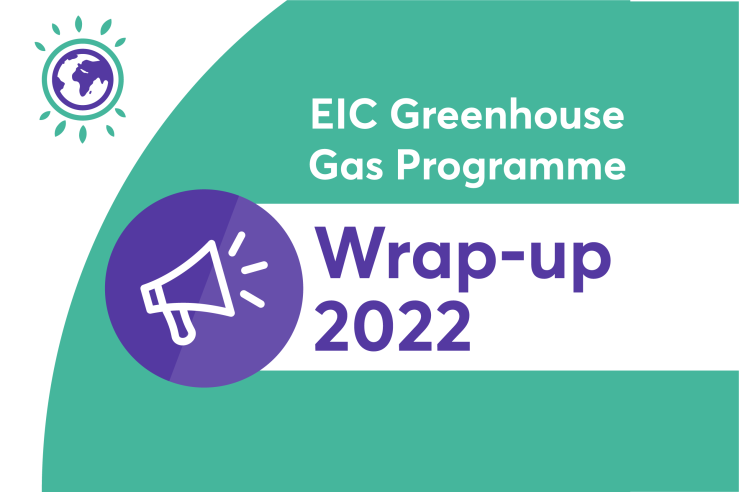Part of the European Innovation Council (EIC), the Greenhouse Gas (GHG) Programme is all about bringing awareness and developing ways to reduce carbon emissions through sustainable practices. This was achieved by offering a set of tailored services to support beneficiaries improve their business practices. With the GHG Programme ending, we invite you to embark on a journey with us that highlights the initiatives and successes it has had.
During 2022, the EIC continued its innovative role of taking a step forward and ensuring the EIC GHG Programme supported its community of entrepreneurs and innovators. Being a pilot programme at the beginning of 2021, after 2 years the EIC supported with great achievement the EU Green Deal objectives of becoming carbon neutral by 2050. Apart from supporting EIC beneficiaries in assessing their carbon footprint, the programme also supported key EU partners to reach carbon neutrality by putting them in contact with EIC innovators and their innovative solutions.

Overall, two years meant: 15 Co-creation events with +200 beneficiaries present, 8 dedicated monthly webinars with 250 participants, the launch of the EIC GHG Tool with 212 registered users receiving support and expertise, and the kick-off of the GHG Badges & CO2 Neutral label.

In this light, here’s our rundown of the key aspects of the GHG Programme this year.
Green initiatives for a more sustainable world
Throughout 2022, various initiatives took place in the Programme; those included strategic partners, such as corporates, industrial associations, regions in carbon transition, plus others.
A variety of services were provided which included:
1) a dedicated carbon footprint tool to help track the company’s CO2 emissions and better develop more efficient solutions to track and reduce GHG emissions – the EIC GHG Tool;
2) the GHG Badges & CO2 Neutral Label initiative;
3) Co-creation events with business partners, industrial associations and regions such as Holcim, GALP, Euratex or the regions of Western Macedonia and Helsinki-Uusimaa;
3) a Resource Library available to all EIC beneficiaries with different sources distributed among specific categories related to the programme to provide additional support.
Moreover, several GHG Tool and synergy/success stories on co-creation were published on the EIC’s Community website.
Choosing the EIC for this green journey
When looking back at the initiatives organised by the EIC under the GHG Programme scope, several EIC beneficiaries explained why choosing the EIC to promote sustainable innovation and growth is an obvious choice.
Take Eurico Correia, Senior Innovation Lead for Renewables and New Business at Galp, who attended the corporate’s co-creation event this year. He explained that: “We could amplify our ability to expose Galp and its needs and focus areas of improvement and innovation. This enabled us to access possible solution providers and partners to co-develop business-driven innovation initiatives. After the [co-creation event], we developed collaboration definitions with selected companies to frame PoCs where both companies can have a concrete use-case and understand better the benefits and limitations”.
Annita Westenbroek, Energy Innovations Manager at Cepi, stated: “The EIC GHG Programme brought us into contact with innovative SMEs that have technologies that may help our industry to decarbonise”.
Yannis Fallas, Director of the West Macedonia Bioeconomy and Environment Cluster, mentioned: “Participating in the EIC GHG Programme was enriching. It provided us with contacts for innovative companies that operate in fields similar to our activities. Also, the process after the co-creation event is ongoing. In one case, the discussion went further to formulating a proposal for a local cooperative to receive funding from local funds, and the result is still pending”.
Victor Pacheco, Global Innovation Process Manager, acknowledged: “During the EIC GHG event we selected 11 startups and currently we have 4 ongoing pilots. Working with the EIC always guarantees high-level startups. If any of the pilots are successful, we will try to replicate them in other Holcim companies”.
Ulrika Wedberg, Vice President of Sustainability at Trelleborg, also added: “Participating in the GHG Programme helped us get in contact with companies that we would never have met otherwise. Currently, we are working closely with 7 companies and seeing good progress”.
The road to the EIC GHG Summit
On 7 December, the EIC GHG Summit was created to mark the end of the programme and to showcase examples of good business collaborations and initiatives, bringing together high-level EIC speakers and peers.
The initiative counted with 69 attendees, discussions on carbon neutrality, co-creation best practices with corporates, innovators, and other key partners, fireside chats with Tool users and success stories that derived from the programme.

Nadia Casatta, Researcher at Diapath and part of the Fireside chat with EIC GHG Tool awardees session, stated:
“We got involved in the GHG Programme through the Tool initiative because we wanted to reduce our company’s impact. We are a chemical-based company, and with the correct data, we could understand the right path to take and opt for proper measures. Therefore, we are focusing on what we can do to reduce our emissions: developing new products, optimising our workspace, etc”.
Venla Virkamäki, Senior Adviser EU Affairs for the Uudenmaan liitto Helsinki-Uusimaa Regional Council, speaker during the Importance of co-creating with public-private partnership session referred:
“Collaborating with the EIC and aligning our ambitious targets with interesting companies has proven worthy for us. As a region, our main takeaway is that it’s important to realize what we can offer to the companies that want to collaborate with us, not just the other way around. The co-creation process helped us identify that better and find a common ground to achieve a win-win situation”.
Dieter Eichinger, Head of Standardisation and Innovation/Secretary-General of BISFA at Euratex, and Alessandro Carfagnini, Co-founder and CTO at CO2BioClean were also speakers during this session. Resulting of the co-creation event with Euratex, the industrial association and the company are now working collaboratively.
“The GHG Programme was an opportunity to cross industries and convert them into a reality by having people that are not from the textile industry present their innovative ideas and see if we were a good match. One of our challenges involved polymers, and we were happy to start working with CO2BioClean. The next phase will be confirming the scalability of this innovation”, stated Dieter.
As for Alessandro, he reiterated that: “Being able to participate in the co-creation initiative with Euratex through the EIC’s GHG Programme was great. We learned more about the textile industry and finetuned our technology for this market while potentiating the reduction of carbon emissions. In a short time, we could do a preliminary experiment and production of prototypes, and this was all due to the EIC’s co-creation initiative”.
Lastly, Liang Wu, Co-founder & CIO at GreenCity Solutions, a speaker during the Fireside chat on the co-creation peer-to-peer session, mentioned:
“The GHG Programme is an important journey for startups and SMEs to find a niche for innovative solutions and enter bigger markets. Seeing as the GHG tool was designed for companies to understand their carbon footprint and find ways to reduce it, our technology can do that and compensate for it”.
Additional information
About the EIC Business Acceleration Services
This opportunity is brought to you by the EIC Business Acceleration Services. To explore other opportunities to connect with the largest corporates in Europe, keep an eye on our events page.


